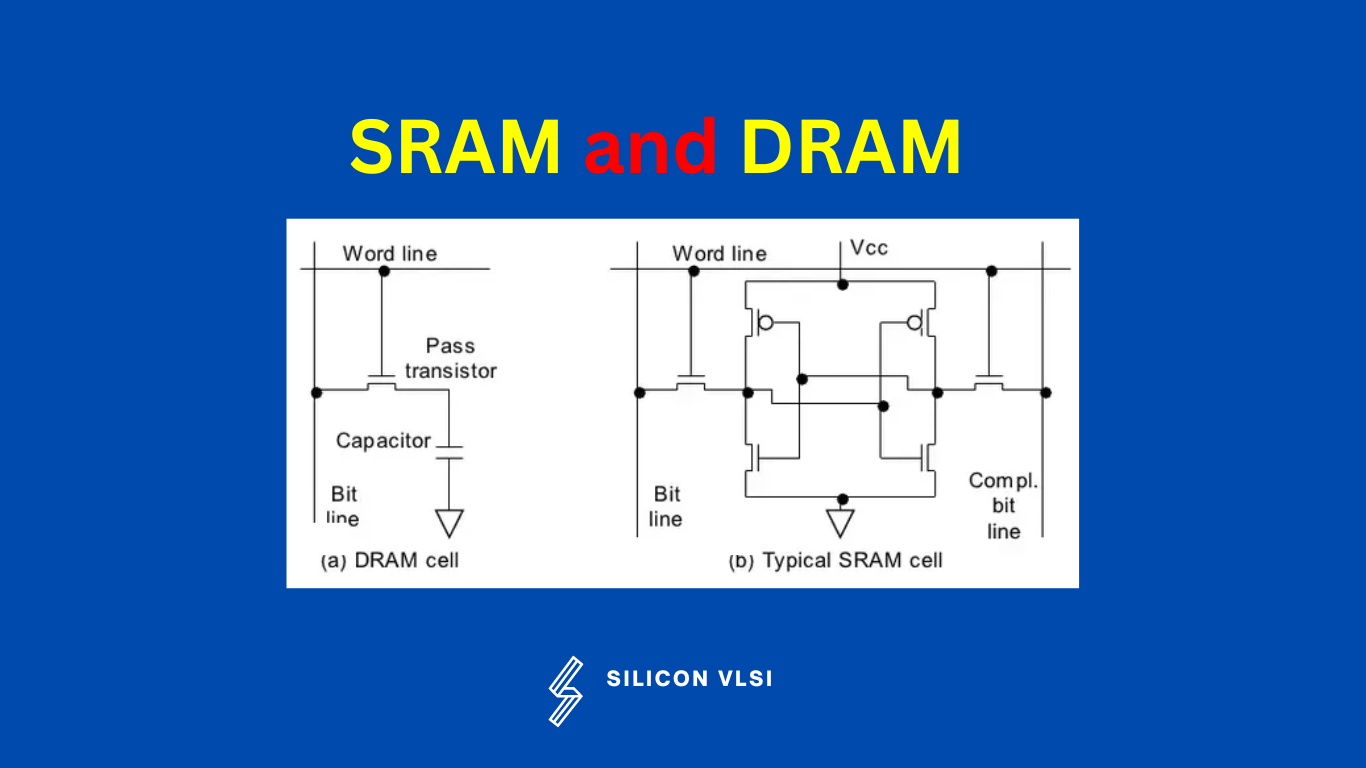Comparison Between SRAM and DRAM
![]()
The main reason for SRAM is faster than DRAM, is SRAM has to require six transistors, and has the advantage of not needing to be refreshed, periodically, while DRAM requires a periodic refresh, to hold the data. This is the main advantage of SRAM.
In SRAM flip-flop circuit is used to store the data, which can be accessed almost instantly. This allows SRAM to have lower latency and faster access time compared to DRAM.
“Because SRAM does not need to refresh, it is typically faster than DRAM.”
On the other hand, DRAM uses a capacitor to store each bit of data, which requires constant refreshing to maintain the charge on the capacitor. This process takes time and requires. This is the main drawback of DRAM memory.
SRAM is typically used in smaller amounts than DRAM and is more expensive to manufacture. This makes it more suitable for applications where speed and low power consumption are critical, such as cache memory in a computer processor. DRAM is more suitable for applications where large amounts of memory are needed at a lower cost, such as system memory in a computer.
Which is faster, SRAM or DRAM?
Static Random Access Memory faster than DRAM is also a memory chip. It uses less power and offers better performance when compared to DRAM. That’s because DRAM needs to be refreshed while in use. SRAM does not need to be refreshed.
What advantage does SRAM have over DRAM?
The main advantage of SRAM is speed. The use of SRAM is to create a speed-sensitive cache. SRAM only has medium power consumption. SRAM has a shorter cycle time since it does not require pausing between accesses.
What is RAM?
RAM is of two types, SRAM and DRAM. RAM stands for Random Access Memory. RAM is a type of volatile memory, i.e., it needs a constant power supply to retain the data stored in it. If the power supply is lost, the data stored in the RAM erase instantly. This is why RAM is also called cache memory or temporary memory of a computer.RAM is a type of computer memory that allows us to access any byte of the memory without the need to access the previous bytes as well.
Characteristics of SRAM
The following are the characteristics of Static RAM:
- SRAM consumes less power than DRAMs.
- SRAM uses transistors to store data.
- SRAMs are expensive to manufacture.
- SRAM is usually used as cache memory.
- SRAMs are significantly faster than DRAMs.
- SRAM occupies more space than DRAMs.#
Characteristics of DRAM
The following are the characteristics of Dynamic RAM:
- DRAM consumes more power than SRAMs.
- DRAM use capacitors to store data.
- DRAM is cheap to manufacture.
- DRAM is usually used as the main memory.
- DRAM needs to refresh in order to retain the data stored.
Advantages of SRAM
- SRAM is much faster in operation than DRAM.
- SRAM does not need to refresh the memory contents.
- SRAM has a low power consumption compared to DRAM.
Advantages of DRAM
- DRAM has a high memory density.
- DRAM is cheaper compared to SRAM.
- DRAM offers a high storage capacity.
Disadvantages of SRAM
- SRAM is very expensive.
- SRAM offers a low storage capacity.
Disadvantages of DRAM
- DRAM needs periodically refresh
- DRAM has a high power consumption.
Speed Comparison Between SRAM and DRAM
Because SRAM does not need to refresh, it is typically faster. The average access time of DRAM is about 60 nanoseconds, while SRAM can give access times as low as 10 nanoseconds.
Capacity and Density
Because of its structure, SRAM needs more transistors than DRAM to store a certain amount of data. While a DRAM module only requires one transistor and one capacitor to store every bit of data, SRAM needs 6 transistors. Since the number of transistors in a memory module determines its capacity, for a similar number of transistors, a DRAM module can have up to 6 times more capacity than an SRAM module.
Power Consumption
SRAM module consumes less power than a DRAM module. This is because SRAM only requires a small steady current while DRAM requires bursts of power every few milliseconds to refresh. Thus, SRAM is used in most portable and battery-operated equipment.
